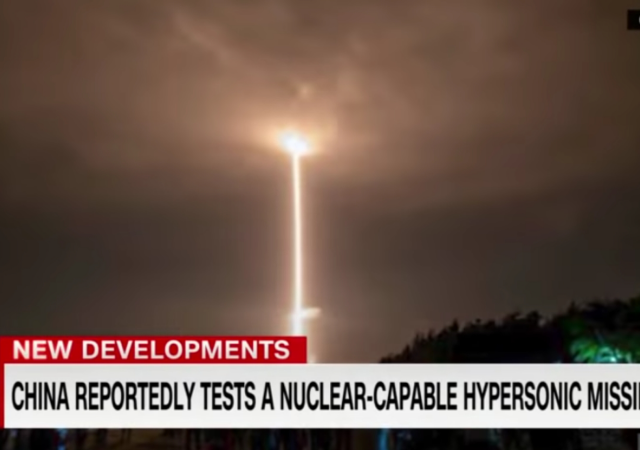China Reportedly Years Ahead of U.S. On Hypersonic Missiles With Heat-Seeking Technology

China claims to have achieved a major breakthrough in hypersonic weaponry by adding heat-seeking capabilities to its missiles, the Hong Kong daily South China Morning Post reported Friday. “Warfare could be transformed by hypersonic missiles able to search for, identify and lock on to targets based on heat signature,” the newspaper added.
The U.S. military is yet to develop heat-seeking technology for its hypersonic missiles, news reports suggest. “Heat sensing at hypersonic speed is difficult because the pace of the missile itself generates heat that interferes with detection systems,” the British newspaper Telegraph explained.
The news comes as the Russian state media also announced the successful testing of its hypersonic missiles. “Russia test-fired around 10 new Tsirkon (Zircon) hypersonic cruise missiles from a frigate and two more from a submarine, Interfax news agency said on Friday citing northern fleet,” the Reuters reported on Friday.
The South China Morning Post reported China’s latest military breakthrough:
Chinese scientists say they have developed next-generation hypersonic weapons with technical breakthroughs in infrared homing technology – which the US military may not have until 2025.Heat-seeking capability allows Chinese hypersonic missiles to home in on almost any target – including stealth aircraft, aircraft carriers and moving vehicles on the street – with unprecedented accuracy and speed, according to the researchers.The first generation of hypersonic weapons were designed to penetrate missile defence systems and hit fixed targets on the ground at five times the speed of sound or faster. Although China and Russia had deployed some hypersonic missiles, a popular opinion elsewhere was that these weapons had little practical value unless a country wanted to start a nuclear war.But conventional warfare could be transformed by a hypersonic missile being able to search for, identify and lock on to a target based on its heat signature when flying at low altitudes where the air is thicker, said the Chinese researchers, from the hypersonic infrared homing programme at the National University of Defence Technology.
Hypersonic weapons are faster, more maneuverable, and harder to detect compared to conventional missiles. “By definition, hypersonic missiles travel at a speed of about Mach 5 or higher, meaning one mile per second, which is five times the speed of sound,” U.S. weekly Defense News explained. “The missile design allows for more maneuverability to avoid missile defense systems.”
In August, China alarmed U.S. military planners by reportedly testing a nuclear-capable hypersonic missile. London’s Financial Times, the newspaper which broke the story, noted that the Chinese hypersonic missile, “flew through low-orbit space” and may be able to “negate” the U.S. missile defense systems.
General Mark Milley, chairman of the joint chiefs of staff, described the Chinese revelations ‘close’ to a Sputnik moment, a reference Soviet Union’s launch of the first earth-orbiting satellite at the height of the Cold War in 1957.
This year, the Pentagon carried out a series of hypersonic weapons tests, but China and Russia seems to be ahead in the race. “The U.S. was once a leader in developing supersonic and hypersonic technology, but we’ve now fallen behind Russia, China and possibly North Korea,” the CNBC reported on Friday.
The mainstream media, now stunned by these Chinese advancements, had ridiculed President Donald Trump for stressing the need for hypersonic technology to match Chinese capabilities. Leading media outlets, including the New York Times, mocked the former president for mispronouncing the missile as “hydrosonic” and for calling it “super duper” fast.
General Milley: China’s hypersonic missile test close to a “Sputnik Moment.”
CLICK HERE FOR FULL VERSION OF THIS STORY